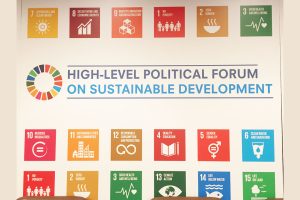The World Health Organization (WHO) and the UN Children’s Fund (UNICEF) have published a progress report on household drinking water, sanitation, and hygiene (WASH) for the 2000-2022 period, with a special focus on gender. The report will support in-depth review of SDG 6 (clean water and sanitation) at the July session of the UN High-level Political Forum on Sustainable Development (HLPF) and high-level review of progress on the 2030 Agenda for Sustainable Development at the SDG Summit in September.
UNICEF and WHO collaborate on the Joint Monitoring Programme (JMP), which monitors progress on WASH worldwide. The JMP report titled, ‘Progress on Household Drinking Water, Sanitation and Hygiene 2000-2022: Special Focus on Gender,’ presents data by country and region, as well as globally. It includes new sex-disaggregated data on the burden of water collection and on perceptions of safety outside the household after dark among men and women without private sanitation facilities, as well as emerging indicators on menstrual health.
The report shows progress towards achieving universal access to WASH. From 2015-2022 alone, household access to safely managed drinking water increased from 69% to 73%. During the same period, safely managed sanitation increased from 49% to 57%, and basic hygiene services increased from 67% to 75%.
However, the report shows, 1.8 billion people still live in households without water supplies on the premises, 2.2 billion people lack safely managed drinking water at home, 3.4 billion people do not have safely managed sanitation, and around 2 billion people cannot wash their hands with soap and water at home.
To achieve the SDG target on universal access to safely managed drinking water, sanitation, and basic hygiene services by 2030, progress would need to increase six-fold for safely managed drinking water, five-fold for safely managed sanitation, and three-fold for basic hygiene services.
The report draws attention to gender inequalities in drinking water, sanitation, and hygiene (WASH) in households. For example, it finds that women are “most likely” to bear the responsibility for fetching water, and girls are nearly twice as likely as boys to be responsible for the task. That means women and girls spend less time on education, work, and leisure. They also put themselves at risk of physical injury and dangers on the way. In addition, women and girls are more likely to feel unsafe walking alone after dark or using a toilet outside of the home.
“Every step a girl takes to collect water is a step away from learning, play, and safety,” said Cecilia Sharp, UNICEF Director of WASH and Climate, Energy, Environment and Disaster Risk Reduction (DRR) (CEED). She said to reach universal access to water and sanitation and achieve gender equality, it is essential to respond to girls’ needs in the design and implementation of WASH programmes.
The report was published on 6 July 2023, ahead of the HLPF’s in-depth review of SDG 6 on 11 July. In addition to SDG 6, the HLPF is reviewing global progress on SDGs 7 (affordable and clean energy), 9 (industry, innovation and infrastructure), 11 (sustainable cities and communities), and SDG 17 (partnerships for the Goals). [Publication: Progress on Household Drinking Water, Sanitation and Hygiene 2000-2022: Special Focus on Gender] [WHO Publication Landing Page] [Online Report] [WHO/UNICEF Joint News Release] [UN News Story] [SDG Knowledge Hub Story on JMP Report for 2000-2017]


